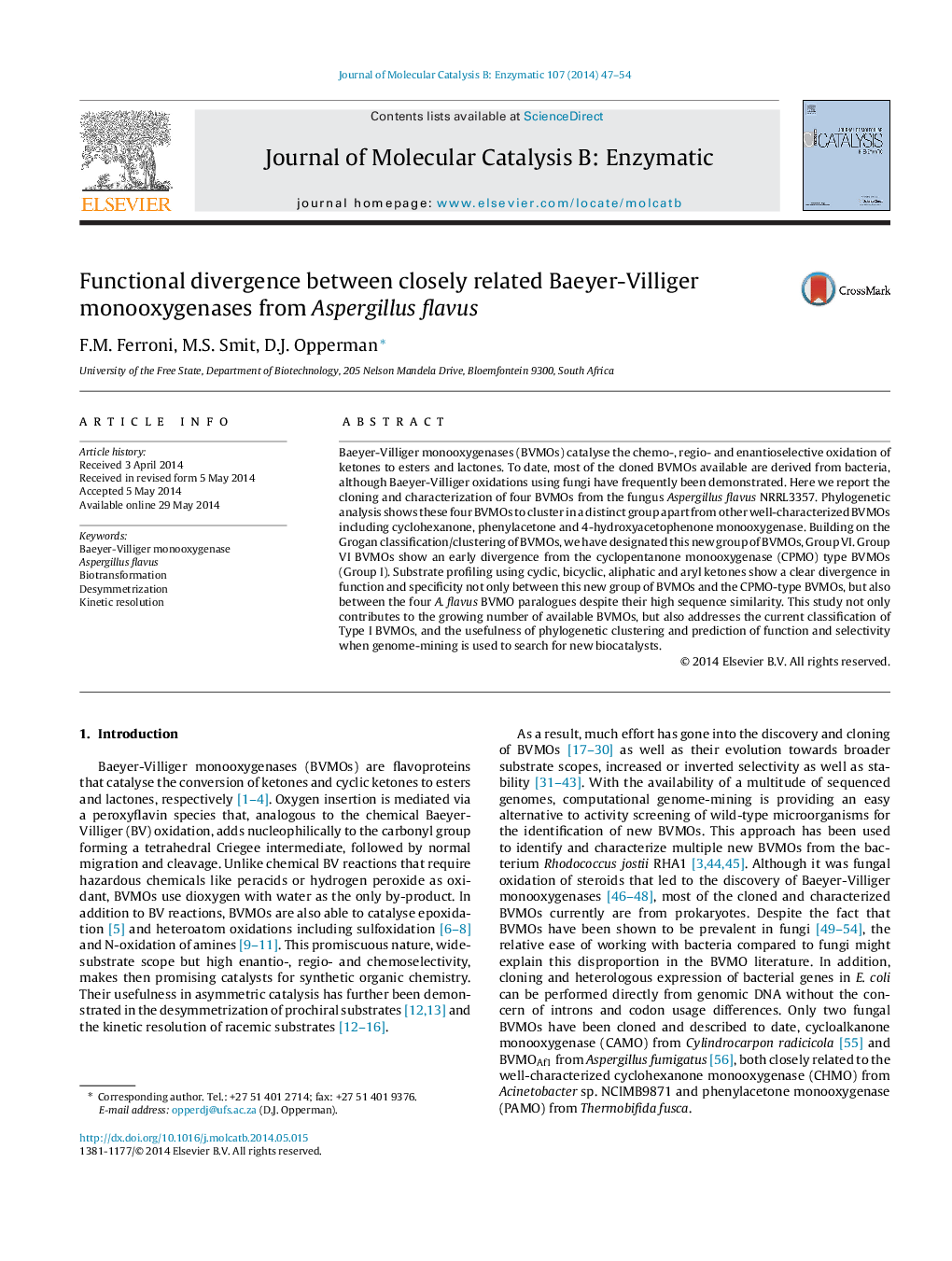| Article ID | Journal | Published Year | Pages | File Type |
|---|---|---|---|---|
| 69488 | Journal of Molecular Catalysis B: Enzymatic | 2014 | 8 Pages |
•Four new fungal Baeyer-Villiger monooxygenases cloned and characterized.•Phylogenetic subgroup diverged from CPMO-type BVMOs.•Paralogues showing different substrate scope and specificity.•Kinetic resolution of rac-bicyclo[3.2.0]hept-2-en-6-one.
Baeyer-Villiger monooxygenases (BVMOs) catalyse the chemo-, regio- and enantioselective oxidation of ketones to esters and lactones. To date, most of the cloned BVMOs available are derived from bacteria, although Baeyer-Villiger oxidations using fungi have frequently been demonstrated. Here we report the cloning and characterization of four BVMOs from the fungus Aspergillus flavus NRRL3357. Phylogenetic analysis shows these four BVMOs to cluster in a distinct group apart from other well-characterized BVMOs including cyclohexanone, phenylacetone and 4-hydroxyacetophenone monooxygenase. Building on the Grogan classification/clustering of BVMOs, we have designated this new group of BVMOs, Group VI. Group VI BVMOs show an early divergence from the cyclopentanone monooxygenase (CPMO) type BVMOs (Group I). Substrate profiling using cyclic, bicyclic, aliphatic and aryl ketones show a clear divergence in function and specificity not only between this new group of BVMOs and the CPMO-type BVMOs, but also between the four A. flavus BVMO paralogues despite their high sequence similarity. This study not only contributes to the growing number of available BVMOs, but also addresses the current classification of Type I BVMOs, and the usefulness of phylogenetic clustering and prediction of function and selectivity when genome-mining is used to search for new biocatalysts.
Graphical abstractFigure optionsDownload full-size imageDownload as PowerPoint slide
